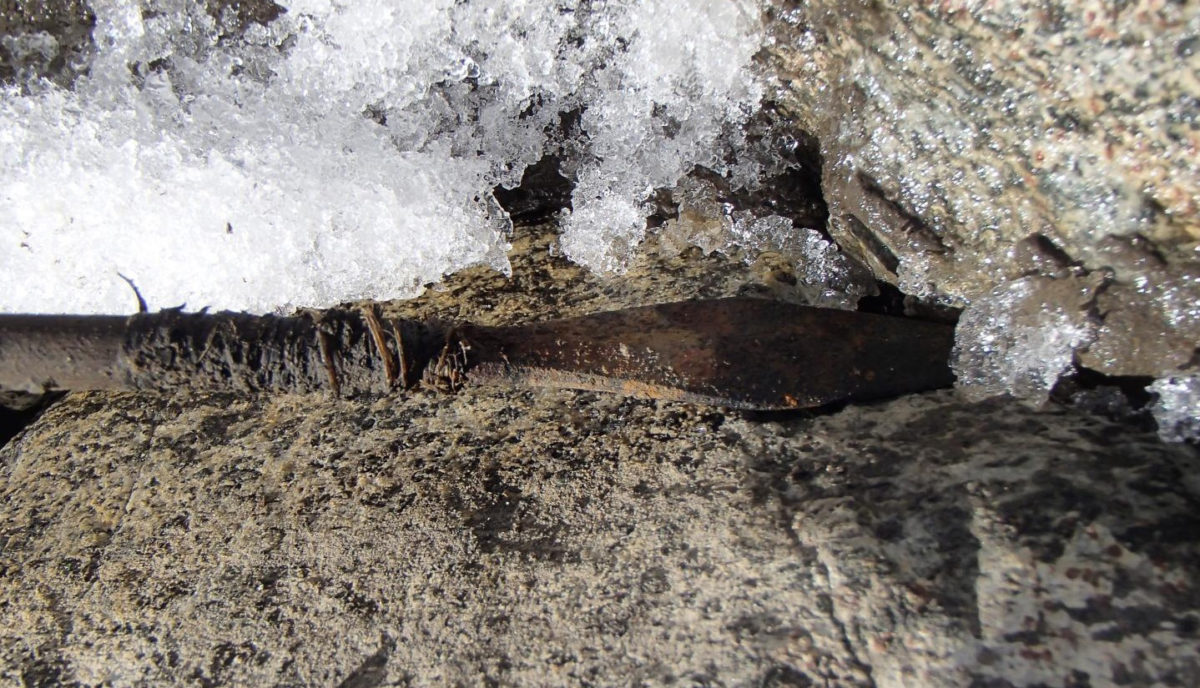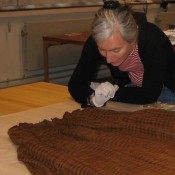The archaeological record of post humanity is being revealed, and then destroyed by melting glacial patches in Scandinavia, the Alps and North America.
This has led to the creation of a subdiscipline of archaeology called “Glacial Archaeology.” Glacial archaeology is the study of the relationship between variability in climate and the intensity of human use of alpine landscapes.
Investigations of Jotunheimen and Oppland, which include Norway’s highest mountains (to 2649m), have been surveyed by an international team of glacial archaeologists to study the effects of contracting ice. Their study has revealed over 2000 artefacts dating from as early as 4000BCE, including Iron Age and Bronze Age clothing, skis, packhorses and even arrows.
A statistical analysis of the finds has revealed that various periods in history have scattered spatial finds, whilst some periods have been virtually void.
Dr James H. Barrett, an environmental archaeologist at the McDonald Institute for Archaeological Research at the University of Cambridge and senior author of the paper commented, “One such pattern which really surprised us was the possible increase in activity in the period known as the Late Antique Little Ice Age (c. 536–660 AD).
This was a time of cooling; harvests may have failed and populations may have dropped. Remarkably, though, the finds from the ice may have continued through this period, perhaps suggesting that the importance of mountain hunting (mainly for reindeer) increased to supplement failing agricultural harvests in times of low temperatures. Alternatively, any decline in high-elevation activity during the Late Antique Little Ice Age was so brief that we cannot observe it from the available evidence.”
Barrett continues, “We then see particularly high numbers of finds dating to the 8th-10th centuries AD, probably reflecting increased population, mobility (including the use of mountain passes) and trade – just before and during the Viking Age when outward expansion was also characteristic of Scandinavia. One driver of this increase may have been the expanding ecological frontier of the towns that were emerging around Europe at this time. Town-dwellers needed mountain products such as antlers for artefact manufacture and probably also furs. Other drivers were the changing needs and aspirations of the mountain hunters themselves.”
There is then a decrease in the number of finds dating to the medieval period (from the 11th century onwards). Lars Pilø, co-director of the Glacier Archaeology Program at Oppland County Council and lead author on the study further explains, “There is a sharp decline in finds dating from the 11th century onwards. At this time, bow-and-arrow hunting for reindeer was replaced with mass-harvesting techniques including funnel-shaped and pitfall trapping systems. This type of intensive hunting probably reduced the number of wild reindeer.”
Professor in medieval archaeology Brit Solli, of the Museum of Cultural History in Oslo, who led the study of the recovered artefacts, comments “Once the plague arrived in the mid-14th century, trade and markets in the north also suffered. With fewer markets and fewer reindeer the activity in the high mountains decreased substantially. This downturn could also have been influenced by declining climatic conditions during the Little Ice Age.”




